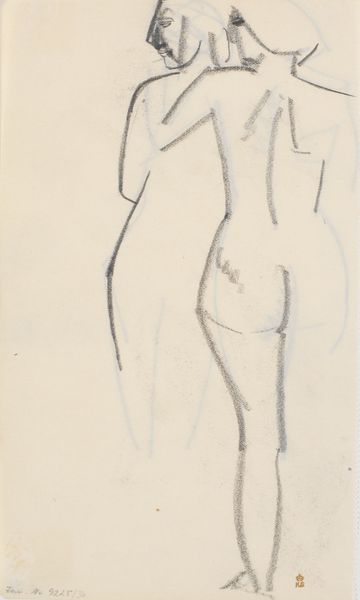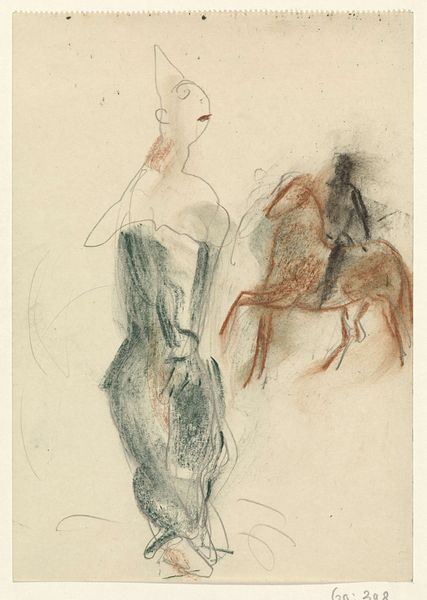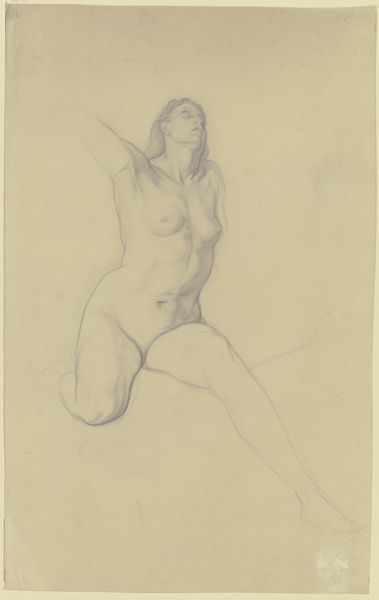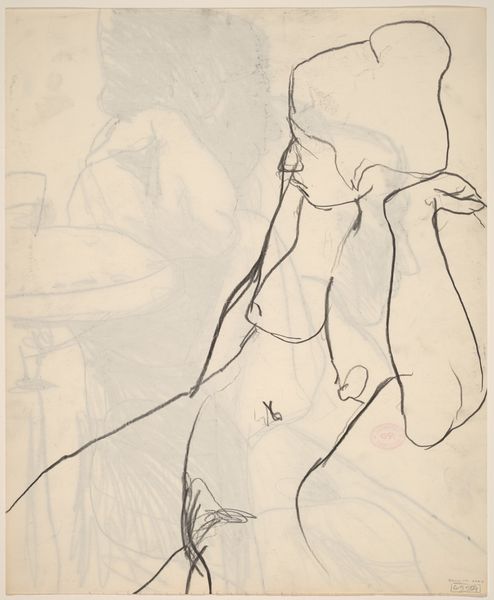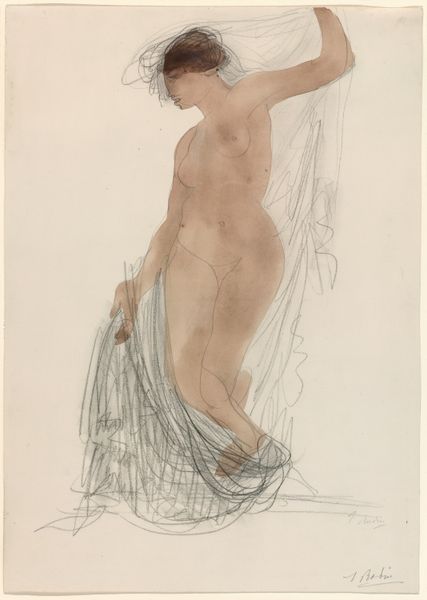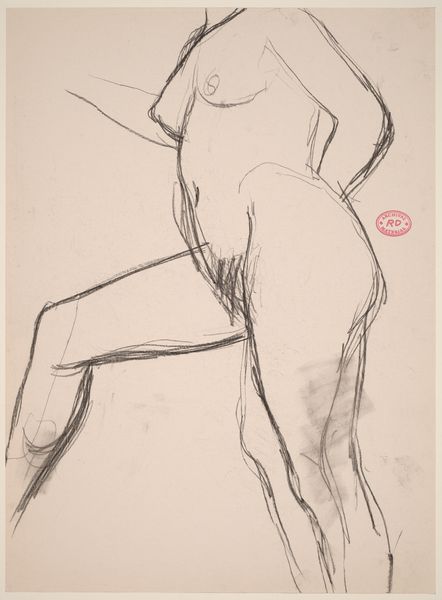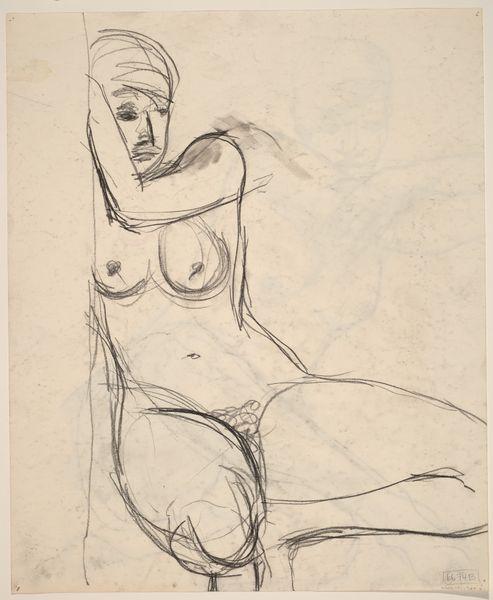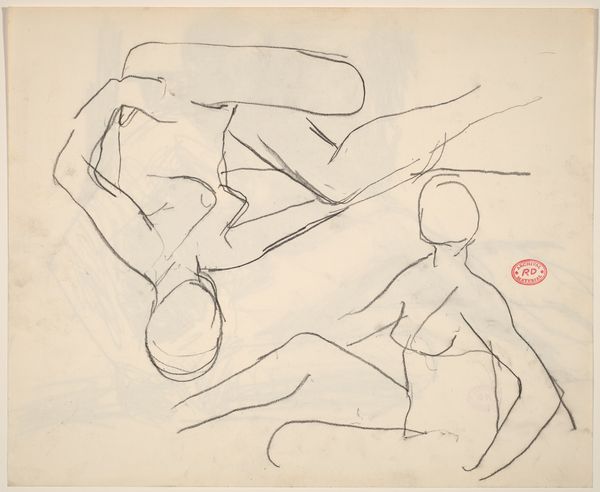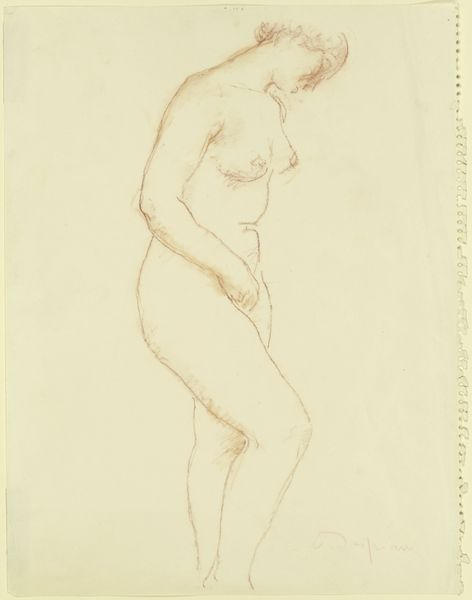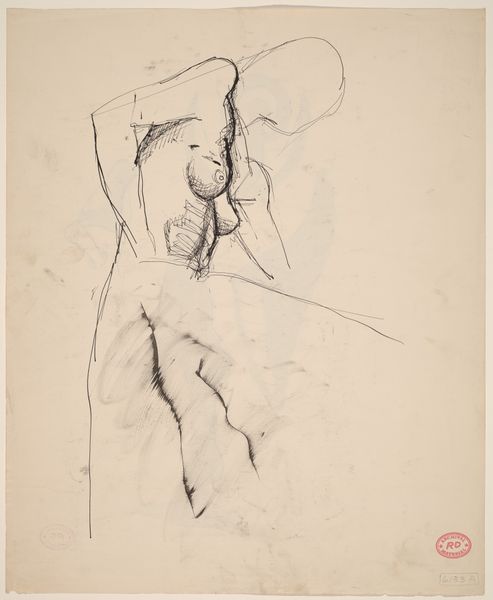
drawing, pencil
#
portrait
#
drawing
#
pencil sketch
#
landscape
#
figuration
#
pencil
Dimensions: 252 mm (height) x 186 mm (width) (bladmaal)
Curator: Immediately striking, isn’t it? There's an almost dreamlike quality to it, something unfinished and fleeting. Editor: I agree. And yet, in its apparent incompleteness, there is also a powerful directness of observation. We're looking at "Nogen kvinde og hestedrosche," or "Some woman and horse carriage" by J.A. Jerichau, created in 1912. The museum records that it was crafted using pencil on paper. Curator: Note the juxtaposition of the female figure rendered in smooth, flowing lines beside the more fragmented representation of the carriage and driver. The figure's pose, arms outstretched, offers an open, embracing form. Editor: That distinction of form feels relevant when thinking of materials. Pencil allows for an immediacy of line, capturing ephemeral moments quickly. There's also an apparent ease and economy of mark making suggesting that this drawing may be related to broader preparatory practices by the artist. Do we know more about the specific paper grade Jerichau would have used for the piece? Curator: Details on specific materials are scant, I’m afraid, but look at the careful shading employed, especially on the driver within the carriage. It offers depth and invites questions around who she may be, set against the nude. The use of line is almost expressionistic. Editor: It does underscore a formal tension and narrative contrast that feels distinctly modern, as if the city's dynamism brushes against this individual's physical autonomy. To me it invites considering how evolving urban mobility intersected with the portrayal—and status—of women during that era. Curator: I find myself more intrigued by the composition itself— the placement of the figures within the frame, and how their relationship remains tantalizingly undefined. The lines gesture and create a dialogue open to interpretation, more so than social prescription. Editor: But perhaps it's that very open-endedness that reflects the unsettled position of women at the time? Jerichau utilizes readily available drawing supplies and an artistic vocabulary reflecting broader cultural questions around visibility, movement, and control that cannot be overlooked when analyzing even the most rudimentary artistic sketch. Curator: Well, regardless of its intentionality, the drawing leaves us with much to consider about line, form, and… human connection. Editor: Exactly. And perhaps consider how even seemingly simple materials like pencil and paper embody much deeper complexities and connections between art and social dynamics.
Comments
No comments
Be the first to comment and join the conversation on the ultimate creative platform.


